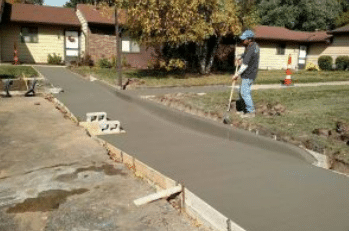
Tips for concrete repair
Concrete is famous for its high level of durability as a building material. In fact, it’s the primary characteristic that is behind its enduring popularity as one of the best choices for different construction and other projects.
However, even though it’s tough and durable, it doesn’t mean that it’s indestructible. Just like any other building material, concrete is subject to wear and tear. It could be caused by different reasons, from the effect of the elements to poor construction.
Water penetration is one of the prime examples of when the elements affect concrete. It can cause minor damage that can worsen over time. And if the soil of the concrete’s subsurface isn’t compacted well, then it could lead to minor as well as major cracks. There are also instances when the very foundation itself might move.
As a homeowner, you can definitely use some tips on how to repair concrete. There are cases where you can do it yourself and there are times when you’ll need to call experts. You can do the more minor repairs such as small cracks on your own. Leave the more serious ones to the pros.
But it’s important that you are aware of what needs to be done and when to call experts when it’s beyond your own ability. Below are simple tips for concrete repair. Read on so you’ll know what to do about them just in case.
Tips for Repairing Small Cracks
Small cracks in the concrete flooring or wall are relatively easy to repair, in fact, you as the homeowner can do it on your own and you don’t need to hire a professional to do it for you.
You can simply chisel out the small cracks in the concrete. If you want to get the best results with repairing those small cracks, then you need to keep it wet for 24 hours. After that, apply the slurry of concrete mist on the wall where the cracks are. The heavier, paste-like mist is then applied to the cavities.
Make sure that area that was repaired is kept moist and well-covered for 5 to 7 days. Doing this will allow the concrete to cure on a gradual basis.
Tips for Repairing Large Cracks
Repairing large cracks is a more complicated process. Usually, large cracks are connected to the undersetting of the slab surface. In order to repair this, the slab itself will have to be removed and then a new bed for the gravel will be placed. The last step involves placing a new slab.
For this kind of repair, you’ll need the services of a professional concrete contractor. The usual method used for this repair is known as slab jacking. It’s one of the best methods for repairing uneven slabs and pavements.
In slab jacking, holes need to be cut into the slab in parts that have to be raised. The cores will have to be removed for later use. Some wet mix of thick concrete is then pumped through the holes and under the slab. The slab will then be raised into place as the pressurized concrete is going to occupy the space.
Repairing Foundations
Foundation repair is done by installing metal ground jacks. This is required when foundations experience drastic settling or even water washout.
The first step to repair the foundation is to drill deep holes into the surface. The holes are between 10 and 50 feet deep. Once the drilling is finished, the metal pipes are inserted into the holes. Plates would then be fortified to the foundation.
The above simple tips for concrete repair are meant to fix any problems encountered by concrete flooring, wall, etc. The important thing is to recognize when to call a professional concrete contractor to do the job and when you can do DIY on it. Visit your nearest Concrete Flower Mound TX today.
0 Comments